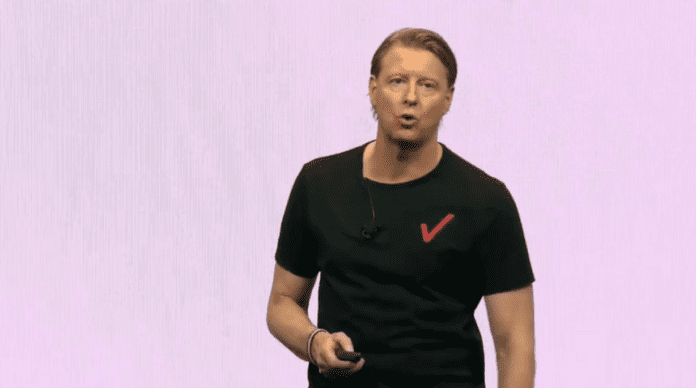Verizon is expanding its fiber footprint as it also continues to expand its fixed wireless access offering
Last week Verizon announced it would spend $20 billion to acquire Frontier, picking up the latter’s customer base and fiber assets. Speaking this week at the Goldman Sachs Communicopia and Technology Conference, Verizon CEO Hans Vestberg laid out the strategic rationale for the move.
“It’s straight into our strategy,” Vestberg said. “We build the network once. We want to address as many profitable connections on top of one build of the network. So of course, adding this is just adding more customers.”
He continued: “It increases our [total addressable market]. We can address more customers with our current strategy, which means that we can sustain growth and continue to grow as we’re doing right now.
“And thirdly, I think we also will have a great opportunity to have both the best wireless network, the largest wireless network in the nation, and then also having an extremely good position on broadband in the country which, over time, depending on how customers [see] it…convergence comes in there and possibilities of that. Those are the three reasons.”
Ahead of the acquisition announcement, Verizon’s Sowmyanarayan Samantha, CEO of the consumer business, detailed the convergence strategy, talking through the relationship between bundling mobility and broadband, both fiber and fixed wireless access (FWA), and how it reduces churn as compared to the non-bundled services. Read that here.
With its Fios offering in the Northeast and mid-Atlantic, and its One Fiber national backbone build out, Verizon has demonstrated a preference for building fiber. In the context of the Frontier acquisition, Vestberg said, “Economics is [a] very important piece of it. We looked at buy versus build, of course, and it was a pretty easy calculation—accretive from the day of the acquisition, both on revenue growth as well as EBIDTA, maybe one year later on EPS and cashflow…So it makes sense financially, strategically, operationally…our scale is going to be enormous.”
Vestberg also talked through the positioning of fiber and FWA for home broadband services. He pointed out that FWA is a “secondary business case” in that it’s served from the same base stations used for the mobile network. “We want to give optionality to our customers,” he said.

